Lenovo Ideapad 710S 13ISK Review
Lenovo Ideapad 710S 13ISK Review
A fantastically thin and light laptop for a great price
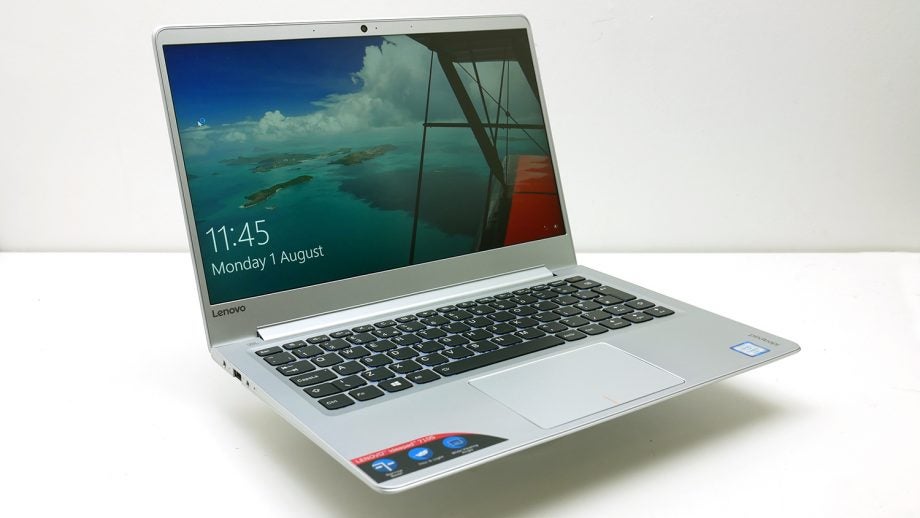
Verdict
Pros
- Elegant design and great build quality
- Superb screen
- Excellent performance
Cons
- Battery life could be a slightly better
- Average touchpad
- MacBooks are still better built
Key Specifications
- Review Price: £799.00
- Intel Core i7-6560U
- Intel Iris Graphics 540
- 13.3-inch 1920 x 1080 IPS display
- 256GB PCIe SSD
- 8-hour battery life
- 1.1kg
- 13.9mm thick
- Model reviewed: 13ISK
What is the Lenovo Ideapad 710S?
The Lenovo 710S is a premium laptop in everything but price. Starting at under £700, and with this higher-end model costing just £799, it offers all the metal build, super-slim frame, quality screen, long battery life and great performance you’d expect from machines costing closer to £1,000.
The unit I have on test is the 710S 80SW0027UK but there are only two variants available and they only differ in terms of the CPU used, so any comments on build, screen and keyboard quality apply across the range.
Video: Trusted explains laptops vs tablets
Lenovo Ideapad 710S – Design and Features
This is a great-looking machine. Clad throughout with aluminium or magnesium alloy, it looks and feels every bit a high-end ultrabook. It can’t quite match the feel of being hewn from solid metal that the MacBook Air and Dell XPS 13 manages – because it isn’t – but it’s still a clear step up from largely plastic designs.
It’s incredibly thin and light too. Weighing 1.1kg, it’s a touch heavier than the latest MacBook (0.9kg), but then it does house a larger 13.3-inch screen and nearly matches the MacBook for slenderness, coming in at 13.9mm. It also comfortably out does the MacBook Air and Dell XPS 13, both of which weigh around 1.3kg.
Related: Best laptops for students
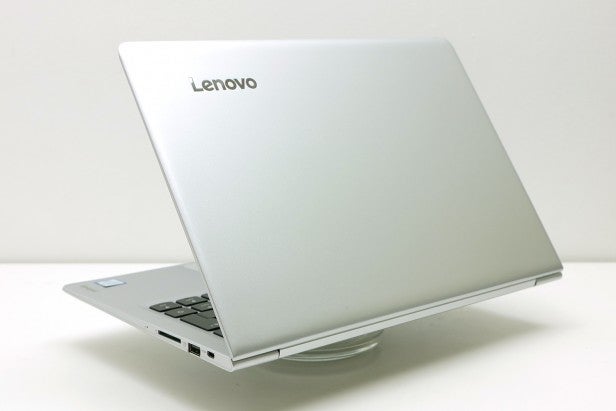
Thanks to the use of a very thin bezel around the screen, the rest of the machine is impressively small too, with dimensions of 307 x 214 x 13.9mm.
You miss out on little in the way of key features, too. There are just a couple of USB 3.0 ports, plus an SD card reader, a headphone jack and a micro HDMI output.
Inside you’ve got an Intel Core i7-6560U processor, which is a dual-core chip with Hyper-Threading so that it can process four threads at once. More importantly, though, it includes Intel’s Iris Graphics 540, which is a surprisingly powerful integrated graphics solution, making this tiny machine capable of playing some games. This is backed up by 8GB of RAM and a fast 256GB PCIe SSD.
There’s been no obvious cost cutting when it comes to the keyboard, either. It’s nicely backlit in white and has two brightness levels, as well as the option to turn it off. The overall layout of the keyboard is also excellent, with no squashed-up or oddly placed keys. Even the key action is reasonably well defined, if somewhat shallow, so it’s easy to tell when you’ve pressed a key properly – good for touch-typing at a decent pace.
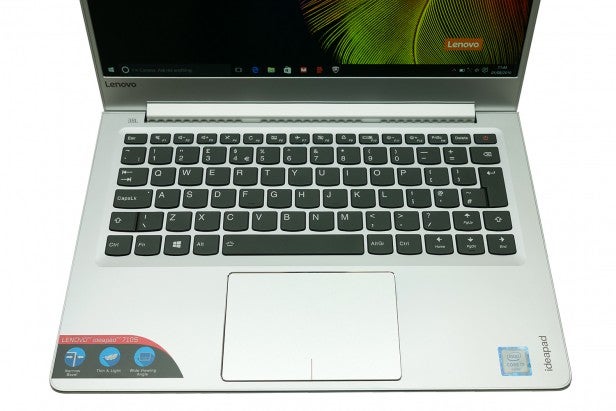
Sadly the trackpad isn’t quite so impressive. It’s nice and large, with a convenient click-anywhere, single-button surface. However, I found the pad had a slight tendency to stick to my fingers in a way that the very best – which often use etched glass rather than the metal here – don’t suffer from. This is one area where the Dell XPS 13 absolutely floors the Lenovo – it has arguably the best trackpad on the market.
Lenovo Ideapad 710S – Screen and Audio
The screen on the 710S can hardly be faulted. The IPS panel produces accurate, punchy colours, with satisfyingly deep blacks. Add in great viewing angles and minimal reflections on the matte finish, and it’s a great viewing experience.
Testing it with a colorimeter it and it continued to impress, delivering a near perfect colour temperature of 6636K, contrast of 1046:1 and decent sRGB colour coverage of 83.7%. With a maximum brightness of 353nits you should have no issues seeing what’s going on in bright conditions either.
The choice of a 1,920 x 1,080 resolution on only a 13.3-inch panel means you have to use Windows scaling tool to make everything look a bit bigger – and that can still be a bit temperamental.
What’s the point of having a higher resolution if you end up making everything bigger to see it? Well, it means programs such as Photoshop and video players like YouTube can still take advantage of the extra resolution to display fantastic images, but when you’re word processing or browsing the web most content still looks a sensible size.
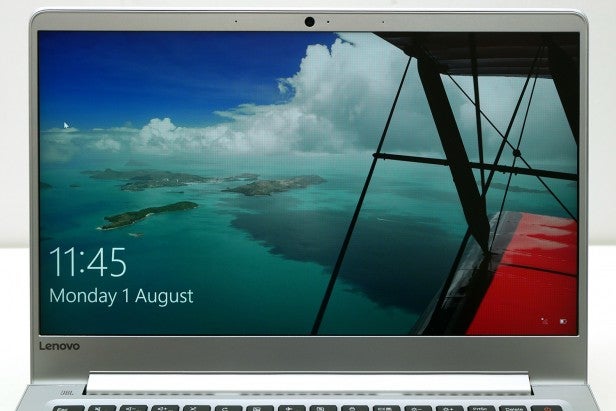
The speakers sound fantastic. The two small speakers firing down from the front of the machine’s underside produce a surprisingly meaty sound, with a solid mid-range presence that powers things along. There’s no true bass to speak of, but it’s far less of a thin and tinny mess than you’d expect from such a small machine.
Comparing to the Dell XPS 13, it’s a close run thing but I’d just give the nod to the Lenovo, and it absolutely blows away plenty of far larger laptops. What’s more, it actually has vaguely useful sound processing in the shape of Dolby Audio, which lets you turn on things like virtual surround and EQ optimised for Music or Movies.
Related: Best MacBook Air Alternatives
Lenovo Ideapad 710S – Performance
The CPU at the heart of this laptop is a real surprise package. Its single-core performance is mighty impressive, beating out just about any other thin laptop CPU you can get with a score of 3,456 in our Geekbench 3 test. With only two cores it isn’t so impressive in multi-threaded scenarios, but its score of 7,019 is still indicative of it being entirely adequate for day-to-day duties.
What really sets it apart, though, is the Iris 540 GPU. In the 3DMark Ice Storm graphics benchmark it actually soundly beat the Nvidia GTX 950M-equipped HP Gaming 15-ak008na with a score of 78,366 to 63,000.
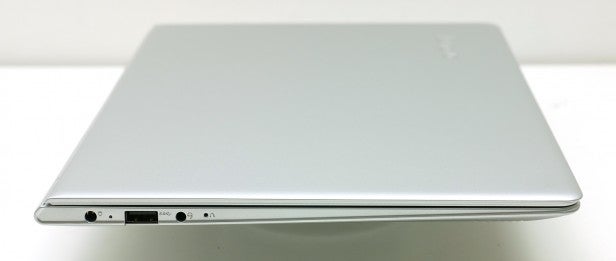
In truth, that’s something of a misleading result, as the CPU here is so fast that it’s pulling up the overall score. More indicative of likely gaming performance is the much more challenging 3DMark Fire Strike test where the Lenovo scores 1,319 compared to the HP’s 2,779.
Nonetheless, you’ll still be able to play 3D games on this thing if you’re happy to reduce the resolution and detail settings.
What’s more, the SSD in this thing is mighty fast, so tasks like booting up, opening programs, moving files and loading games all happen lightning-fast. We tested its performance with AS SSD and it managed 1,290MB/s read and 301MB/s write speeds. That’s 2.5x faster than a typical SATA SSD for read speed and a pretty solid write speed, too.
Combined with that CPU you get a fast system overall, which is reflected in the PCMark 8 benchmark score of 2,865. It beats the aforementioned HP (2,825) and Dell Inspiron 13 (2,732), for instance.
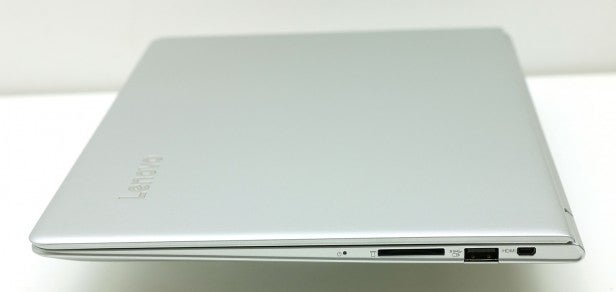
As for battery life, the 710S actually surpassed Lenovo’s claims, managing 8 hours 37 minutes in our Powermark benchmark. The test consists of a loop of 10 minutes of web browsing and 5 minutes of watching video, with the screen set to 40% brightness.
Obviously that figure will drop the more intensively you use this machine, but you should still comfortably get most of a working day out of one charge. All that said, there are some ultrabooks that do offer more, with the likes of the MacBook Air and Dell XPS 13 offering closer to 10 hours.
Related: Best laptops
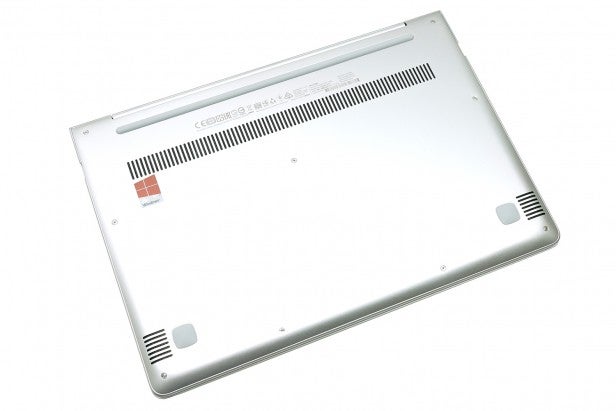
Should I buy the Lenovo Ideapad 710S?
This is a fantastic laptop for the money. It has all the premium qualities you’d hope for from a top-end lightweight laptop, and sneaks in at under £800.
With surprisingly strong performance, a quality screen, good battery life, a decent keyboard and surprisingly impressive audio, there’s nothing major letting this machine down. The only slight slip-up is the touchpad, which isn’t the greatest but is also hardly a deal breaker.
Given the pricing, the most obvious comparison here is the Apple MacBook Air, and while that machine does have a slightly nicer design, touchpad and keyboard, the Lenovo soundly beats it for performance and screen quality, and still comes in £50 cheaper. Meanwhile the latest Dell XPS 13 looks poor value in comparison, as the equivalent spec for that machine costs £1,049. Of course, with that machine, you’re paying for something very special in the design and build department.
You can get cheaper ultrabooks but only if you’re willing to drop to a markedly slower Core M processor, as in the Asus UX305CA.
Verdict
A fantastic machine at a fantastic price. This is a great option for those seeking a top-notch lightweight laptop without breaking the bank.
How we test laptops
Unlike other sites, we test every laptop we review thoroughly over an extended period of time. We use industry standard tests to compare features properly. We’ll always tell you what we find. We never, ever, accept money to review a product.
Trusted Score
Score in detail
-
Performance 9
-
Keyboard 8
-
Design 9
-
Screen Quality 9
-
Build Quality 9
-
Value 10
-
Touchpad 7
-
Features 8
-
Heat & Noise 8
-
Battery Life 8

